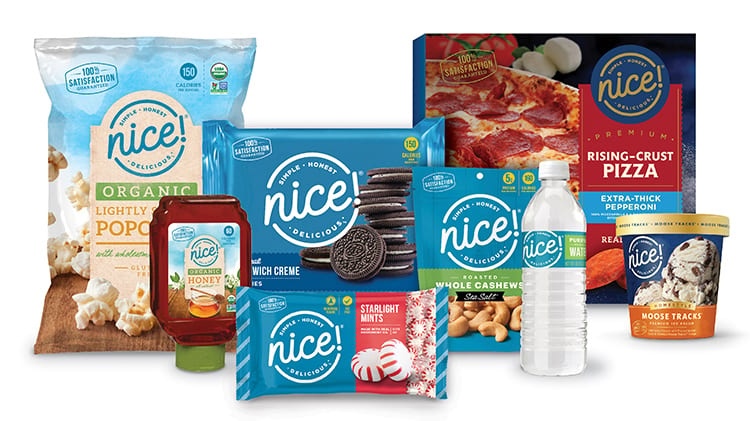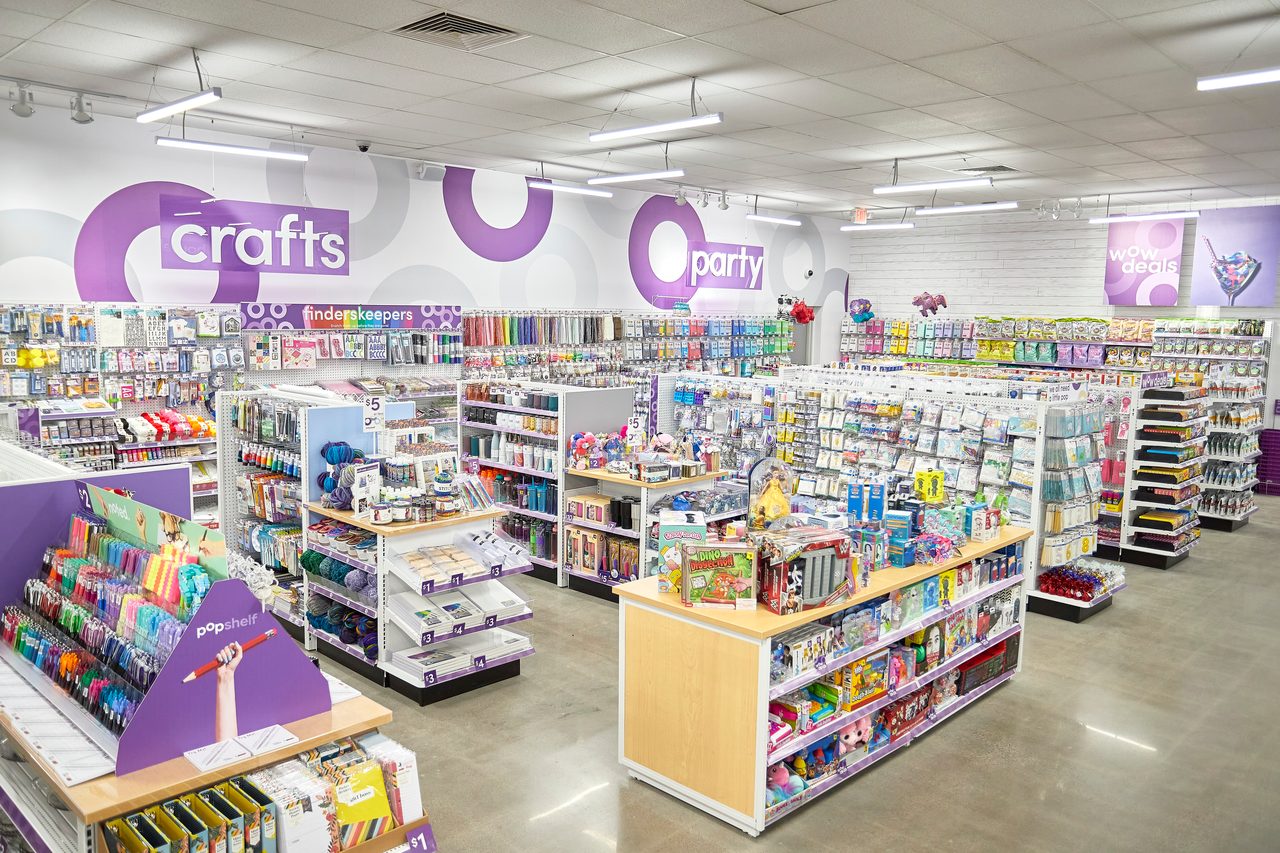Channel
Strategies
A mixed bag for limited-assortment retailers
By Lauren Sabetta
Variety, convenience spur growth for dollar, drug outlets
(Image courtesy of Dollar General Corp.)
Regarded as one of the greatest golfers of all time, Tiger Woods, while assessing his performance at The Players Championship, once said: “It was a mixed bag pretty much all week. A lot of really, really good stuff out there, some mediocre and some bad.” In a similar manner, when assessing the dollar and drugstore channel, experts note that the ongoing coronavirus pandemic carries mixed impact and sales for dollar and variety stores.
“Dollar stores continued to experience growth in 2021, however, at a slower rate than in 2020,” says Brigette Thomas, lead analyst at IBISWorld, New York. “Since the industry offers comparatively lower prices on everyday goods, the industry typically benefits from economic disruptions.
“In 2021, dollar and variety stores are expected to have a 2.1% increase in revenue as the economy begins to recover from the COVID-19 pandemic. This growth is significantly less than 2020 as consumers began to return to traditional retail stores,” she continues.
From one perspective, because its operators market goods based on comparatively lower prices than convenience stores, the industry typically benefits from a measurable increase in national unemployment, which increased 120.7% in 2020 alone, Thomas says.

After conducting extensive research, including more than 7,000 customer interviews, Walgreen’s Nice! brand now includes new products and design elements that make it easier for customers to approach healthy living, the company says. (Image courtesy of Walgreens)
“As unemployment rises, consumer spending levels decrease and consumers taper discretionary purchases in favor of personal savings and debt obligations. However, since many industry operators have expanded product portfolios to include toiletries, groceries and healthcare products, the industry will benefit from an increasing proportion of price-sensitive consumers,” she explains. “This increasing price sensitivity will, in effect, amplify the competitive advantage of value prices for discount retailers, bolstering overall demand.”
Nonetheless, the disruptive effects of the pandemic on traditional retail experiences might offset more substantial expansion, Thomas notes.
“Additionally, although the large majority of industry operators were deemed essential businesses by federal mandates, consumers may opt for the added variety of big-box retailers to reduce the amount of necessary shopping trips,” she says.
“[S]ince many industry operators have expanded product portfolios to include toiletries, groceries and healthcare products, the industry will benefit from an increasing proportion of price-sensitive consumers. This increasing price sensitivity will, in effect, amplify the competitive advantage of value prices for discount retailers, bolstering overall demand.”
— Brigette Thomas, lead analyst at IBISWorld
Furthermore, the eCommerce channel removes any need to visit a physical storefront, thus encroaching on industry demand.
The increasing popularity of eCommerce has pressured drugstore and dollar store operators, Thomas explains.
“Industry operators traditionally benefit from being a convenient, quick and less expensive shopping experience for consumers. Since online retailers are able to offer similar benefits, consumers are increasingly choosing to do their shopping virtually,” she says. “This trend was accelerated by the coronavirus and the subsequent social distancing regulations, along with many consumers not feeling comfortable visiting brick-and-mortar stores.”
Expanding consumer options
Experts note that to compete with online and big-box retailers, major players within the channel have increased accessibility to online shopping, making it easier for consumers to shop through eCommerce alternatives.
Dollar General announced plans to accelerate pOpshelf store openings and open up 1,000 new stores by the 2025 fiscal year end, including approximately 100 additional stores in fiscal year 2022, the company says. (Image courtesy of Dollar General Corp.)

Digital technology, such as mobile apps, also can be used advantageously to promote loyalty, as consumers can use their apps to get coupons and other discounts, Thomas notes.
For example, with the onset of the COVID-19 pandemic, Deerfield, Ill.-based Walgreens launched myWalgreens, a complete reinvention of its customer loyalty program to offer customers new benefits, including same-day retail pickup. The myWalgreens app also provides access to an at-home delivery service through DoorDash and Postmates and a Prescription Savings Club with up to 80% off cash retail prices, the company says.
Goodlettsville, Tenn.-based Dollar General also partnered with San Francisco-based DoorDash in November, offering on-demand delivery of household essentials such as food, water, snacks, toiletries and cleaning supplies. “Consumers can browse and order products for same-day delivery (in under an hour on average) through DoorDash’s marketplace app or website with no time slot or minimum order size required,” the company said in a statement.
Emily Taylor, Dollar General’s executive vice president and chief merchandising officer, added: “At Dollar General, we strive to make shopping hassle-free and affordable, and our partnership with DoorDash reiterates DG’s commitment to provide convenient and contactless options. We look forward to providing both existing and new customers with an even faster and more convenient way to experience all that DG has to offer.”
Because industry operators, specifically dollar stores, typically locate in lower income areas with populations under 20,000 people, increasing urbanization trends do not generally benefit these retailers, IBISWorld’s Thomas says. However, to further compete with big-box stores like Target, these retailers have increasingly been adding more product offerings within their stores, she notes.
“Additionally, major industry player, Dollar General, introduced a new store model and name to appeal to a larger consumer base,” Thomas says. “This new store, pOpshelf, was designed to appeal to mid-income level consumers in suburban areas and carries products closer to what consumers may find in a Target store.”
Drawing consumers in
Given the rise in inflation, the dollar channel is expected to show improvement in the first half of 2022. Meanwhile, “the drug channel did well during the past year, in part because access to vaccinations drove foot traffic,” says Joan Driggs, vice president of content and thought leadership at Information Resources Inc. (IRI), Chicago.
According to IRI Market Advantage, drugstore channel sales are up 2.7% for the 52 weeks ending Dec. 26, 2021, with beverage sales up 8.4%.
Within the drugstore channel, beverages overall saw sales gains of 1.8%, however, unit sales were down 5.4%, indicating the prices were higher ― people bought less and paid more, Driggs explains.
“Subcategories that enjoyed the largest sales gains include bottled water (up 12.3%), energy drinks, (up 16.7%), sports drinks (up a whopping 43.4%), and non-fruit drinks, which include yogurt drinks and some non-dairy drinks,” she continues.
Additionally, IRI data shows ready-to-drink (RTD) coconut milk and almond milk up 25.2%, liquid drink enhancers up 14.8%, and refrigerated coffee/tea up 15.9%.
“Products that lost dollar sales include coffee (-10.9%), drink mixes (-10.6%) and cocktail mixes (-13.8%), instant tea mixes (-23.3%), powdered milk (-22.1) and shelf-stable juice concentrate (-50.5%),” Driggs adds.
For the dollar channel, Driggs notes that sales were up 3.2% for the same time period, with beverage sales up 6.8%.
“For many shoppers during the pandemic, the dollar channel was convenient to shop because it’s a quick trip,” she says. “But as we gain mobility, shoppers are more likely to spread their purchases across more channels and especially for late 2021 and as we start 2022, they are looking harder for bargains, so likely shopping multiple stores.” BI
